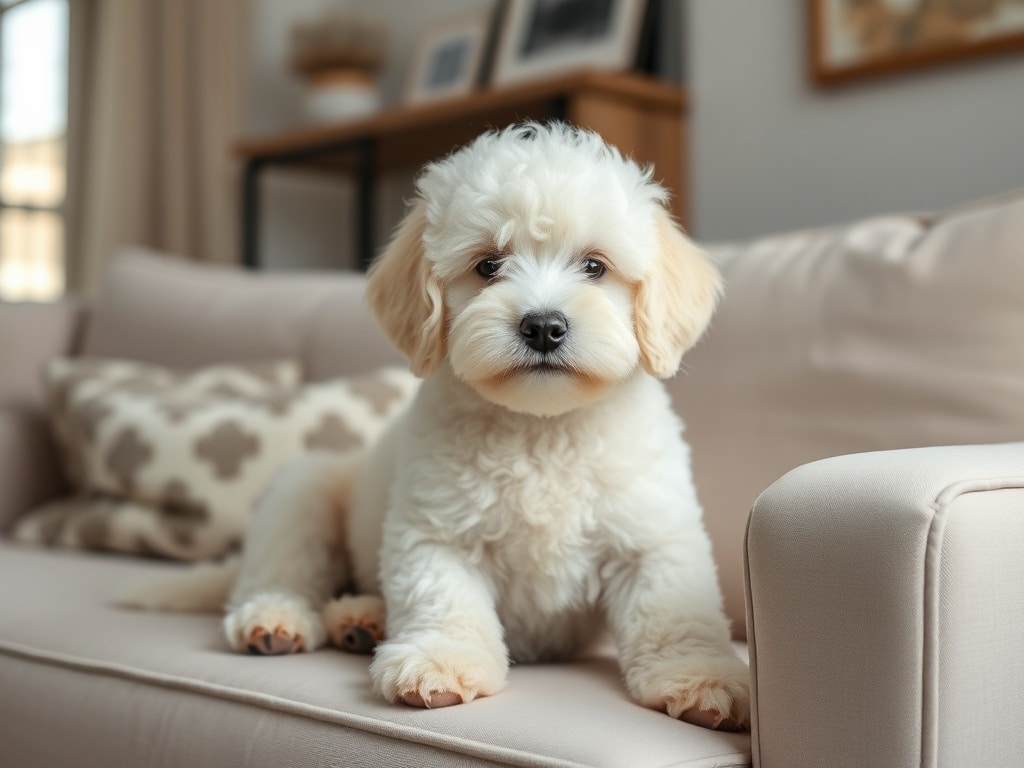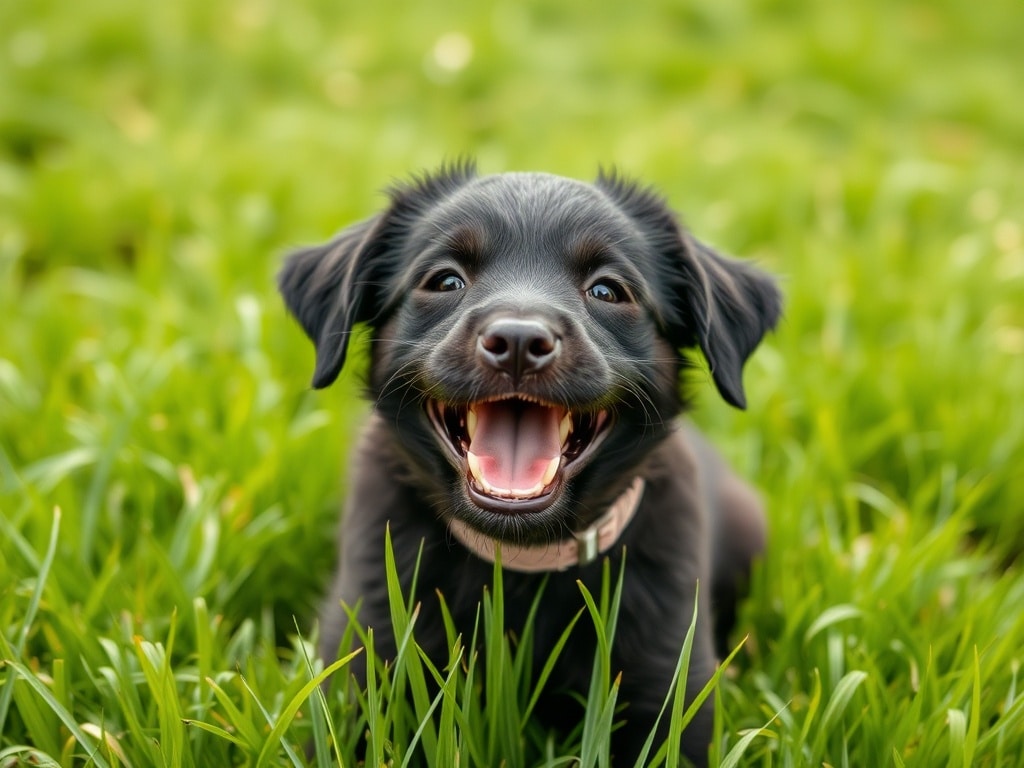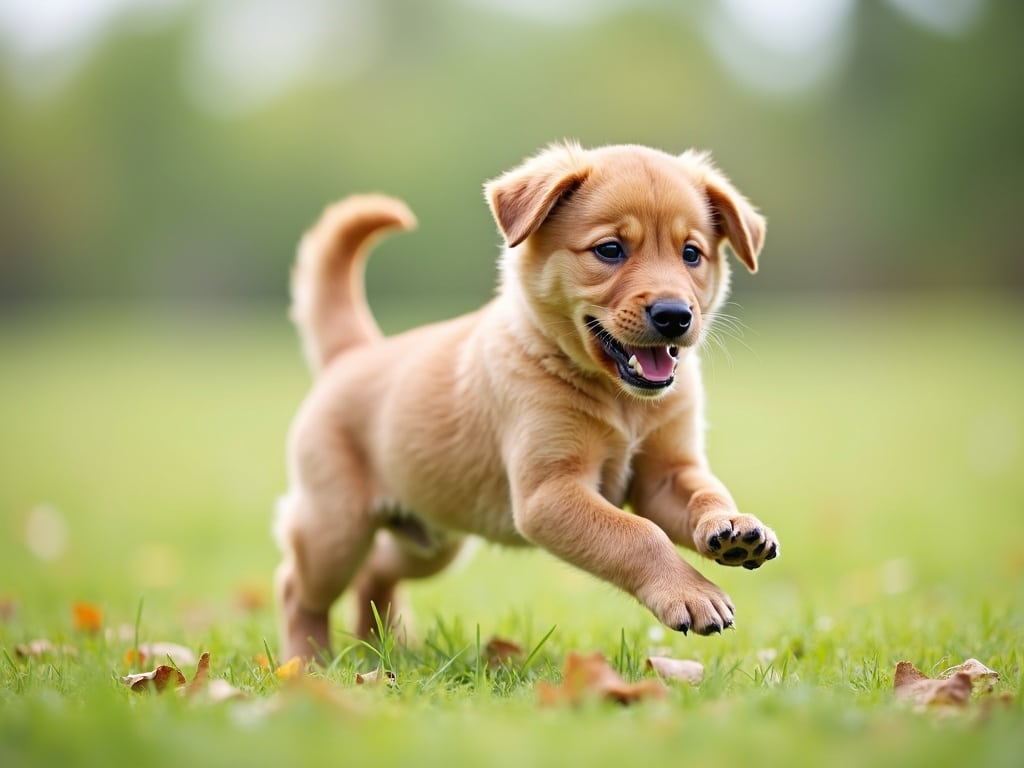Potty Training Panic? Solve Puppy Problems & Stop the Barking Blues!
Bringing a new puppy home is a joyous occasion, filled with cuddles, playful nips, and those irresistibly cute puppy-dog eyes. But amidst the fluff and fun, two common challenges often rear their heads: potty training woes and the seemingly endless symphony of barking. Don’t despair! This comprehensive guide is your roadmap to navigating these puppyhood hurdles, turning your adorable furball into a well-behaved member of the family.
Early Signs and Preparations for Potty Training
Before diving into the nitty-gritty, let’s lay the groundwork for successful potty training. Timing is everything, and being prepared can make all the difference.
When to Start Potty Training?
Ideally, start as soon as your puppy arrives home, typically around 8-12 weeks old. At this age, they have limited bladder control, so consistency is key.
What Supplies Do I Need?
- Enzyme Cleaner: Crucial for eliminating odors that might attract your puppy back to the same spot.
- Leash: For controlled potty breaks.
- Treats: Small, high-value rewards for positive reinforcement.
- Designated Potty Spot Markers: Puppy training spray or flags to reinforce the designated location.
How Do I Choose the Right Potty Spot?
Select a consistent, easily accessible outdoor area. Consider factors like privacy, surface (grass, gravel), and proximity to your house. Take your puppy to this spot immediately after waking up, eating, and playing.
Establishing a Potty Training Routine
Routine is your secret weapon in the potty training battle. A predictable schedule helps regulate your puppy’s needs and minimizes accidents.
How Often Should I Take My Puppy Out?
As a general rule, take your puppy out every 2-3 hours, especially after waking up, eating, and playing. Puppies have tiny bladders, so frequent trips are essential.
What’s the Best Way to Reward Successful Potty Breaks?
Immediate, positive reinforcement is crucial. When your puppy eliminates in the designated spot, shower them with praise (Good potty!), and offer a small, tasty treat. This creates a positive association with the desired behavior.
How Long Do I Stick With a Potty Training Routine?
Consistency is key. Stick to the routine diligently for several weeks. Even as your puppy masters potty training, occasional reminders and reinforcement can prevent regressions.
Crate Training and Potty Training
Crate training, when done properly, can be a valuable asset in your potty training arsenal. It provides your puppy with a safe haven and helps them learn bladder control.
Is Crate Training Necessary?
Not necessarily, but it’s highly recommended. Dogs naturally avoid soiling their sleeping area, making the crate a helpful tool for potty training. Just ensure you introduce crate training gradually and positively.
How Does Crate Training Aid in Potty Training?
A crate encourages your puppy to hold their bladder and bowels until they are taken outside. It also provides a safe space and reduces anxiety when you’re not at home.
What Size Crate Is Appropriate?
The crate should be just large enough for your puppy to stand up, turn around, and lie down comfortably. Too much space might encourage them to eliminate in one corner and sleep in another.
Dealing with Accidents
Accidents happen! It’s a part of the learning process. How you respond to these accidents is crucial for maintaining a positive training environment.
What Do I Do When My Puppy Has an Accident Inside?
If you catch your puppy in the act, interrupt them with a firm Uh-oh! and immediately take them outside to their designated potty spot. If they finish there, praise and reward them. If you find an accident after the fact, simply clean it up without scolding.
How Do I Properly Clean Up Accidents to Eliminate Odors?
Use an enzymatic cleaner specifically designed for pet messes. These cleaners break down the organic compounds in urine and feces, effectively eliminating odors that might attract your puppy back to the same spot.
Is Punishment Effective in Potty Training?
Absolutely not! Punishment, such as yelling or rubbing your puppy’s nose in the mess, can create fear and anxiety, hindering the training process and damaging your relationship with your puppy.
Nighttime Potty Training
Nighttime accidents can be frustrating, but with a few adjustments, you can help your puppy sleep through the night without needing a potty break.
How Do I Prevent Nighttime Accidents?
Establish a consistent bedtime routine. Take your puppy out for a potty break right before bedtime, and limit water intake a couple of hours before sleep. Make sure they have a comfortable and secure sleeping environment.
How Do I Handle a Puppy Whining in the Crate at Night?
If your puppy whines in the crate at night, resist the urge to immediately let them out. If you’re sure they’ve had a chance to potty and aren’t in distress, ignore the whining. If the whining persists, take them outside for a quick potty break, but keep it brief and boring, without playtime or interaction. Slowly increase the time between potty breaks over a few nights.
How Do You Adjust Water Intake Before Bed?
Avoid giving your puppy a large bowl of water right before bedtime. Offer smaller amounts of water throughout the day, and then remove the water bowl about 2-3 hours before their bedtime.
Addressing Potty Training Setbacks and Challenges
Every puppy learns at their own pace. It’s common to encounter setbacks along the way. Patience and persistence are key to overcoming these challenges.
What if My Puppy Seems Resistant to Potty Training?
If your puppy seems resistant, revisit the basics. Ensure you’re consistently taking them out at the right times, using positive reinforcement, and properly cleaning up accidents. Rule out any underlying medical issues by consulting with your veterinarian.
How Do I Handle Changes in Routine that Disrupt Potty Training?
Changes in routine, such as travel or schedule adjustments, can disrupt potty training. Try to maintain as much consistency as possible. Bring familiar items, like their crate or bedding, when traveling. Be prepared for more frequent potty breaks during times of change.
When Should I Consult a Vet About Potty Training Issues?
If your puppy struggles with potty training despite your best efforts, or if you notice changes in their urination habits (straining, blood in urine, increased frequency), consult your veterinarian. Underlying medical conditions, like a urinary tract infection, could be contributing to the problem.
Understanding Excessive Barking
Excessive barking is a common complaint among puppy owners. Understanding the underlying causes of barking is crucial for finding effective solutions.
What Are the Common Reasons Puppies Bark Excessively?
Puppies bark for a variety of reasons, including:
- Territoriality: Barking at people or animals that approach their territory.
- Attention-Seeking: Barking to get your attention or a treat.
- Excitement or Playfulness: Barking during play or when they see something exciting.
- Boredom or Frustration: Barking due to lack of mental and physical stimulation.
- Anxiety or Fear: Barking when they feel anxious or threatened.
How Do I Differentiate Between Normal Barking and Problem Barking?
Normal barking is typically situational and stops when the trigger is removed. Problem barking is excessive, persistent, and often occurs without an obvious trigger.
Are Some Breeds More Prone to Excessive Barking?
Yes, certain breeds, such as terriers, hounds, and herding breeds, are more prone to barking due to their natural instincts and breed characteristics.
Training Techniques to Reduce Barking
Training can be highly effective in reducing excessive barking. Consistency and positive reinforcement are key to success.
What Are Some Effective Training Methods to Stop Excessive Barking?
- Identify the Trigger: Determine what is causing your puppy to bark. This will help you tailor your training approach.
- Desensitization and Counter-Conditioning: Gradually expose your puppy to the trigger at a low intensity while associating it with something positive, like treats.
- Redirection: When your puppy starts barking, redirect their attention to a different activity, like a toy or a training command.
How Do I Teach the Quiet Command?
When your puppy starts barking, say Quiet! in a firm but calm voice. If they stop barking, even for a moment, praise and reward them. Gradually increase the duration of the quiet period before rewarding.
When Should I Ignore Barking?
If your puppy is barking for attention, ignoring the barking can be effective. Avoid eye contact or any form of interaction. Once they stop barking, even briefly, you can then give them attention or a reward.
Environmental Enrichment and Mental Stimulation
Boredom is a major contributor to excessive barking. Providing adequate environmental enrichment and mental stimulation can significantly reduce barking.
How Does Boredom Contribute to Barking?
Bored puppies often bark out of frustration and pent-up energy. They may be seeking attention or simply trying to entertain themselves.

What Toys and Activities Can Help Reduce Barking?
- Puzzle Toys: These toys challenge your puppy mentally and physically, keeping them engaged and entertained.
- Chew Toys: Provide appropriate chew toys to satisfy their natural chewing instincts.
- Fetch and Play: Regular physical activity helps burn energy and reduces boredom.
- Training Sessions: Short, frequent training sessions provide mental stimulation and strengthen your bond with your puppy.
Does Socialization Help Combat Barking?
Yes, proper socialization can help reduce barking caused by fear or anxiety. Expose your puppy to a variety of people, places, and situations in a positive and controlled manner.
Medical Reasons for Barking
In some cases, excessive barking can be a sign of an underlying medical condition. It’s important to rule out any medical causes before assuming it’s purely behavioral.
Could a Medical Condition Be Causing the Barking?
Certain medical conditions, such as pain, cognitive dysfunction (doggy dementia), and sensory decline (hearing loss, vision problems), can contribute to excessive barking.
When Should I Consult a Vet About Excessive Barking?
If the barking starts suddenly, is accompanied by other symptoms (loss of appetite, lethargy, changes in behavior), or doesn’t respond to training, consult your veterinarian.
What Are Some Potential Medical Causes of Barking?
Potential medical causes include:
- Pain (arthritis, dental disease)
- Cognitive Dysfunction Syndrome (CDS)
- Sensory Decline (hearing loss, vision impairment)
- Thyroid Problems
Management Strategies for Barking
While training and enrichment are essential, management strategies can help control barking in specific situations.
Are Bark Collars Safe and Effective?
Bark collars, which deliver a correction (sound, vibration, or static shock) when a dog barks, are controversial. While they may suppress barking in some dogs, they can also cause anxiety and fear. Consider consulting a professional trainer before using a bark collar, and always use them responsibly and humanely.
How Else Can I Manage Barking in Noisy Environments?
White noise machines can mask external sounds that trigger your puppy’s barking. Keep your windows closed to reduce noise penetration and create a dedicated quiet spot for your puppy.
What Can I Do to Make My Puppy More Confident and Reduce Anxiety-Related Barking?
Build your puppy’s confidence with consistent positive reinforcement and gradually expose them to new situations. Avoid overwhelming situations, as this can increase anxiety and defensive barking.

Combining Potty Training and Barking Solutions
While seemingly separate issues, successful potty training and barking reduction share some common ground: consistency, patience, and positive reinforcement.
How Do I Manage Both Issues Simultaneously?
Prioritize establishing a consistent routine for both potty training and barking reduction. This provides your puppy with structure and predictability, reducing anxiety and promoting good behavior.
Is There Any Overlap in Training Techniques?
Yes, positive reinforcement is a key element in both potty training and barking reduction. Rewarding desired behaviors encourages your puppy to repeat those behaviors in the future.
What Steps Can I Take to Ensure Success with Both Problems?
- Be Patient: Both potty training and barking reduction take time and effort. Don’t get discouraged by setbacks.
- Be Consistent: Stick to your routine and training plan, even when you’re tired or busy.
- Be Positive: Focus on rewarding good behavior rather than punishing bad behavior.
- Seek Professional Help: If you’re struggling with either potty training or barking reduction, don’t hesitate to consult a veterinarian or certified dog trainer.
By understanding the underlying causes of these common puppy problems and implementing effective training and management strategies, you can create a harmonious home where your puppy thrives. Remember, patience, consistency, and positive reinforcement are your greatest allies in this journey.


